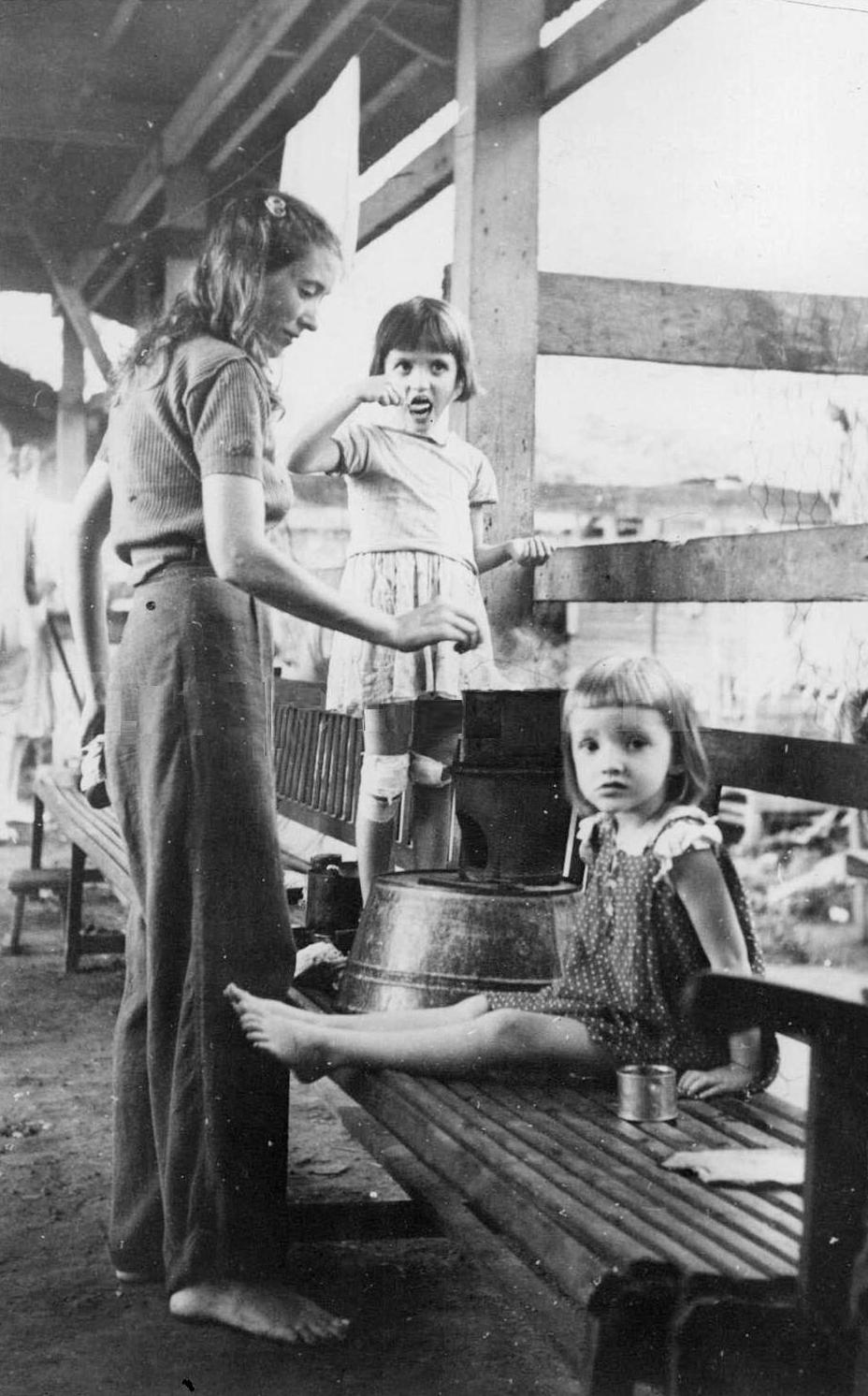
World War II Philippines: Japanese Internment of American Civilians--Camps

Figure 1.--This scene at Santo Tomas seems to have been taken at Santo Tomas just before the Americans liberated the camp. The adults were starving when the American soldiers reached Santo Tomas, but they seem to have kept the children fed. The press caption read, "Daily Meal at Santo Tomas: Mrs. James E. Seater, of Washington, D.C. and Anchorage, Alaska, cooks the daily meal of corn meal mush for her two children, Diane Claire, 5, and Daphne, 3 at Santo Tomas intrnment camp." We are not sure when the photogrph was taken, but it is dated February 11, 1945. As the Americans entered Manila, the Japanese garrison began raping women and killing all the civilians they got their hands on. Somehow the Americans got to Santo Tomas just in time to protect the internees.
|
|
The Japanese set up internment camps on Luzon and other islands. The largesrt and best known for civilian internees was Santo Tomas in Manila. Other camps which were primarily gfor POWs included: Bacolod (Negros), Baguio/Camp Hay/Holmes (Luzon), Los Baņos (Luzon), Bilibid Prison (Luzon), Cabanatuan (Luzon), Camp O'Donnell (Luzon), Camp Manganese/Guindulman/Bohol, Camp Malolos/Bulcan, Cebu City (Cebu), Davao (Mindanao), Masbate (Visayan Islands), Puerto Princesa Prison Camp (Mimaropa). Some of the American military POWs were transported off the Islands for slave labor at other locations. The civilian internees were kept in the Philippines. Most of the civilian internees were intened at University of Santo Thomas in Manila. Here more than 3,000 internees were quartered (January 1942-February 1945). Conditions for the internees deteriorated seriously during the War. Part of the problem was that the Japanese occupation of the Philippines as in other areas was an econoic disaster. The economy began to collapse and food production declined creating great scarities. The internees at Santo Tomas and the other camps began to starve. As most of the civilians were interned at Santo Tomas, the story of the civilian internees in the Philippines is largely dominated by the expeiences at this one large camp. Each camp, however, had its on individual story. One particular incidet occurred at Los Baņos, southeast of Manila which held both civilis and POWs. The Japanese moved 520 Catholic missionaries into the Los Baņos camp (July 1944). Problems developed with the other internees because many of these missionaries had signed pledges of cooperation with the Japanese Army.
CIH -- WW II

Navigate the CIH World War II Section:
[Return to Main World War II Japanese mistreatment of civilian internees]
[Return to Main World War II Japanese mistreatment of civilian internees]
[Return to Main World War II Philippines country page]
[Return to Main World War II Pacific campaign page]
[About Us]
[Biographies]
[Campaigns]
[Children]
[Countries]
[Deciding factors]
[Diplomacy]
[Geo-political crisis]
[Economics]
[Home front]
[Intelligence]
[Resistance]
[Race]
[Refugees]
[Technology]
[Bibliographies]
[Contributions]
[FAQs]
[Images]
[Links]
[Registration]
[Tools]
[Return to the Main World War II page]
[Return to Main war essay page]
Created: 8:12 AM 1/28/2018
Last updated: 8:12 AM 1/28/2018



